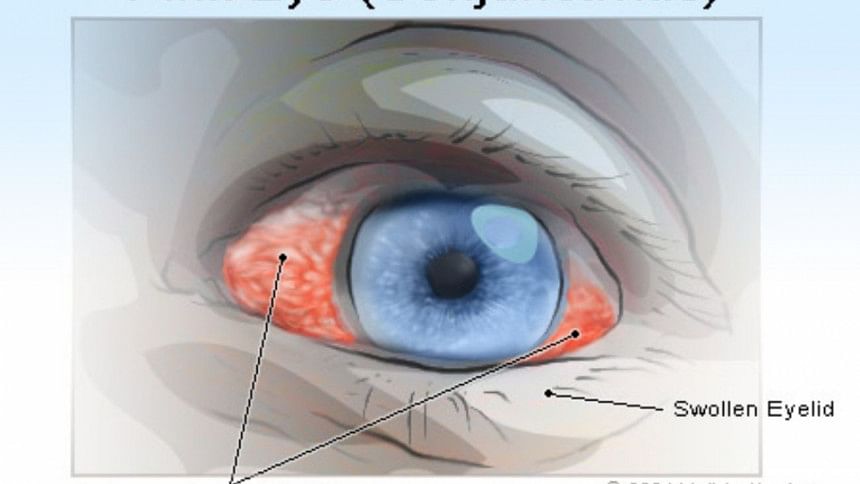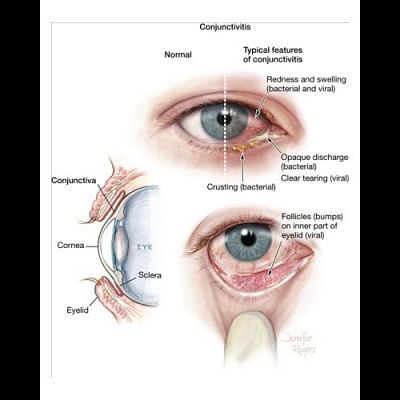GET RID OF THAT PINK EYE!

It is mid-May and summer has already hit the city with full blow. It's now time to gear-up and stay safe from all the summer-time health risks. One of the most common infections to spread in this dreaded weather is conjunctivitis.

Pink-eye (conjunctivitis) is a swelling or infection of the membrane that lines your eyelid and covers the white part of your eyeball (conjunctiva). When small blood vessels in the conjunctiva become inflamed, they're more visible. This is what causes the whites of your eyes to appear reddish or pink. Pink eye is commonly caused by a bacterial or viral infection, an allergic reaction, or — in babies — an incompletely opened tear duct. Though pink eye can be frustrating, it rarely affects your eye sight. Treatments can help ease the discomfort of pink eye. Because pink eye can be contagious, early diagnosis and treatment can help limit its spread.
There are many ways you can treat conjunctivitis on your own.
First thing to remember for contact lens users is to not wear them until your conjunctivitis has completely cleared up. It's also important to refrain from rubbing your eyes and to make sure you regularly wash your hands. Don't share pillow cases, towels or go swimming until your conjunctivitis has completely cleared up. Don't share your eye cosmetics and regularly replace products you use on your eyes.
| SYMPTOMS OF CONJUNCTIVITIS * Redness in one or both eyes * Itchiness in one or both eyes * A gritty feeling in one or both eyes * A discharge in one or both eyes that forms a crust during the night that may prevent your eye or eyes from opening in the morning * Tearing |
If you have allergic conjunctivitis, try to steer clear of whatever is causing your allergic reaction. For example wearing sunglasses can reduce exposure to pollen or dust. A cool compress, such as a facecloth soaked in cold water, may help to soothe your eyes.
Infective conjunctivitis usually settles without any treatment within about two weeks. You may find it helps to wipe away any discharge from your eyelids and lashes with cotton wool soaked in cooled boiled water or saline. To help ease the discomfort of infective conjunctivitis, you may find a warm compress, such as a facecloth soaked in warm water, soothing on your closed eyes.
If your treatment at homes proves to be ineffective, it means that the infection now needs medical help and it's best to see an ophthalmologist.
With such measures, there will be fewer possibilities of getting this horrid infection, or at least it will be easier to get rid of it. With conjunctivitis put aside, you can now make sure to have a wonderful summer!
***
According to cdc.gov, if you are around someone with infectious (viral or bacterial) conjunctivitis, you can reduce your risk of infection by following these steps:
** Wash your hands often with soap and warm water. If soap and warm water are not available, use an alcohol-based hand rub.
** Wash your hands after contact with an infected person or items he or she uses; for example, wash your hands after applying eye drops or ointment to an infected person's eye(s) or after putting their bed linens in the washing machine.
** Avoid touching or rubbing your eyes.
** Do not share items used by an infected person; for example, do not share pillows, washcloths, towels, eye drops, eye or face makeup, and eyeglasses.
** Clean, store, and replace your contact lenses as instructed by your eye doctor.
Sources: www.mayo clinic.com www.bupa.co.uk

 For all latest news, follow The Daily Star's Google News channel.
For all latest news, follow The Daily Star's Google News channel. 



Comments